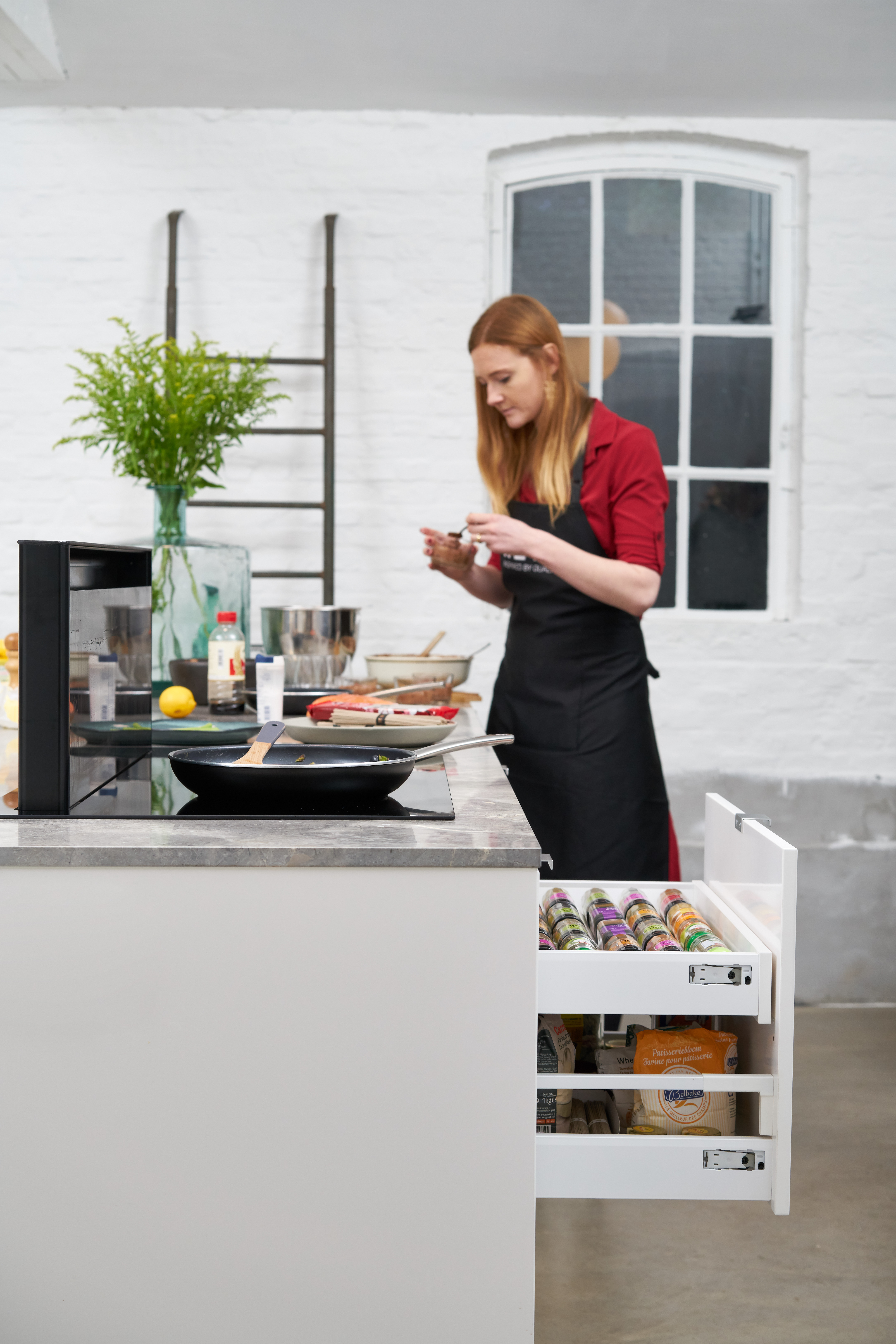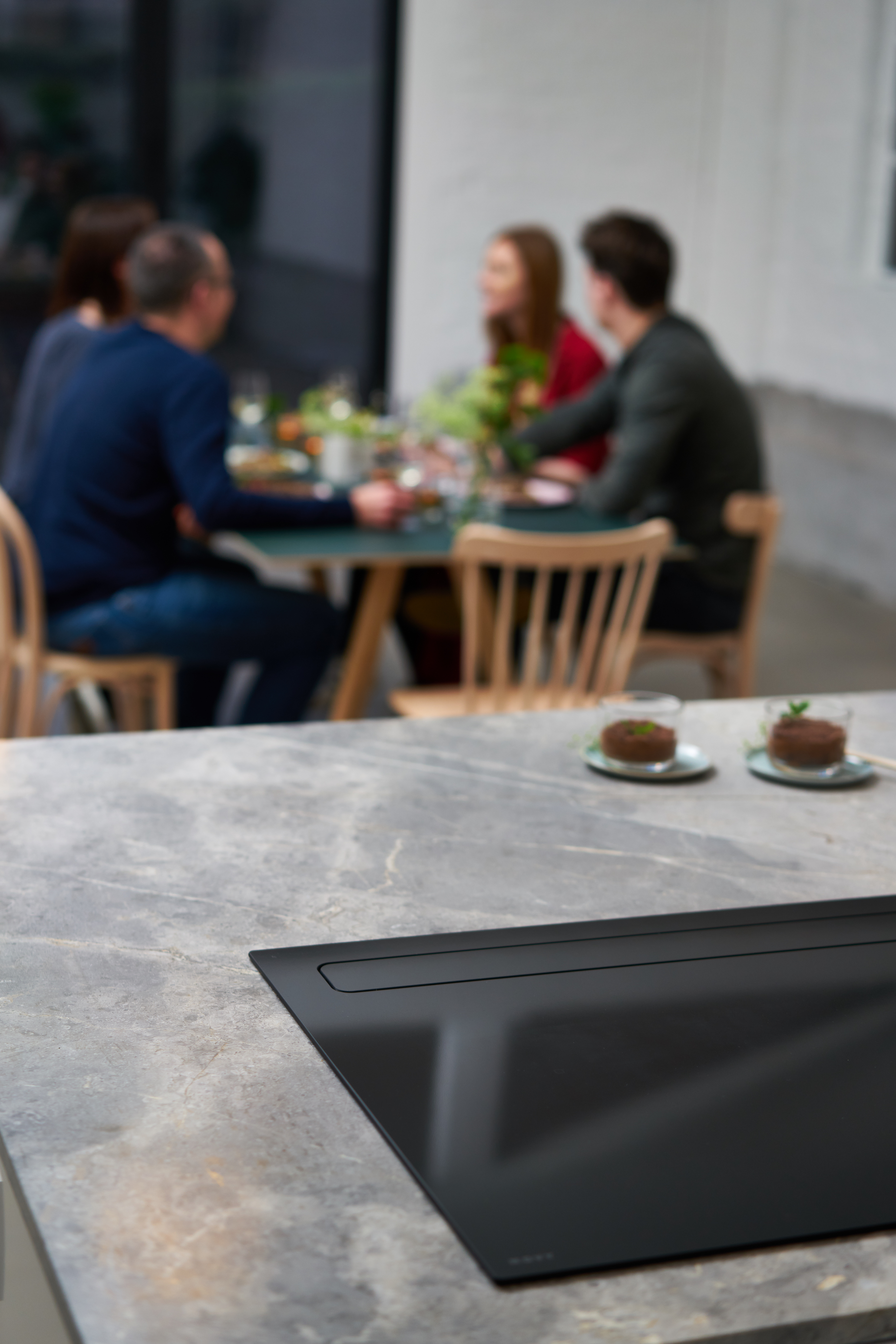A crash course in mindful cooking
How to switch off the auto-pilot...
Running errands, cutting vegetables, cooking pasta,spooning out plates … At the table! Does your kitchen time often feel as if you are running on auto-pilot? Time for a crash course in mindful cooking!
But first…
Mindful, mind-what?
There must be hundreds of definitions of mindfulness, but this is what it boils down to: learn to focus on the experience of the moment. That means you’re not doing anything on auto-pilot anymore. Why not? That auto-pilot can be very practical, no? Sure, but if you can’t switch it off anymore, you’re not enjoying cooking (or whatever you’re doing) anymore and that’s no joy. Mindfulness teaches you to be in the now again.
The advantages?
Less…
- stress
- worrying
More…
- focus
- creativity
And that simply will make you happier, be it at work, in the bedroom, in the garden or the kitchen.
Make it work!
Mindful cooking in 5 steps
-
 Clean desk
Clean desk
Visual peace creates peace of mind. Is this morning’s breakfast still on the sink? Magazines or other stuff that doesn’t belong there trailing around on your cooking island? Clear it first! Make sure that only the ingredients and the tools you are going to need are on your work surface.
-
Ignore the clock
‘Ready in 15 minutes! At the table in half an hour! Try this 5 minutes soup!’ These time indicators in cooking books and recipes might come in handy, but it is anything but mindful cooking. All time pressure must be avoided. Chopping, cutting, shaking, grating … You do it one at a time at an easy pace, and you try to enjoy every single act. Put the water on while you’re still cutting vegetables? Try not to do that kind of things today.
-
Prick up your ears
The radio in the background, the kids running in and out, a podcast in your ears, your partner sitting down for a chat … Nice, but it won’t help your mindful cooking! Create a kind of cocoon around yourself and disappear into it. The only sounds? Butter melting in the frying pan, the rhythmic tick-tick-tick of your knife on the cutting board, the bubbling of boiling water … Sharpen your senses and be conscious of everything you hear, feel, smell and taste. The sound and smell of frying onion, the particular structure of a cauliflower, the explicit odour of beetroot, the brilliant shine of the vegetables mix …

-
Mind your breathing
Breathe in, breathe out: sounds easy, but if there’s anything we’re doing on auto-pilot, it must be breathing. It’s useful to check on your breathing from time to time. It allows you to check if you’re breathing properly, but also to monitor your stress level. If you notice your breathing is shallow and fast, work on your abdominal breathing.*
* Abdominal breathing, how does that work?
Put your hands on your belly. Breathe through your nose towards your belly and try to breathe out as long as possible. While breathing in count to 4, then hold your breath for 1 second. Then breathe out slowly, during about 8 seconds. Feel your belly slowly moving up and down. By consciously applying this you will gradually calm down and negative thoughts will disappear
-
Serve with pride and love
 Be proud of what you have prepared and consequently serve it with love. Pots and pans on the table and ladle it out? Don’t think so. Get out your nicest cutlery, present the food in some stylish platters, or dress it nicely on your loved ones’ plates and make the table look attractive.
Be proud of what you have prepared and consequently serve it with love. Pots and pans on the table and ladle it out? Don’t think so. Get out your nicest cutlery, present the food in some stylish platters, or dress it nicely on your loved ones’ plates and make the table look attractive.
Enjoy!
A selection of our quietest cooker hoods
Novy Ceiling unit Novy Pureline 6830
Novy Ceiling unit Novy Pureline 6831
Novy Ceiling unit Novy Pureline 6840
Novy Ceiling unit Novy Pureline 6841
Novy Hob + Hood Novy Panorama Pro 1821
Novy Hob + Hood Novy Panorama Power 1831
Novy Hob + Hood Novy Panorama Power 1841
Novy Wall mounted Flatline 7600
Novy Canopy Mini Pureline 810
Novy Canopy Mini Pureline 811
Novy Canopy Mini Pureline 820
Novy Canopy Mini Pureline 821
Novy Canopy Mini Pureline 826